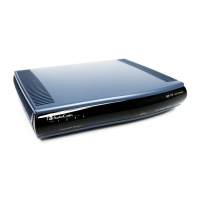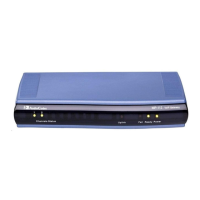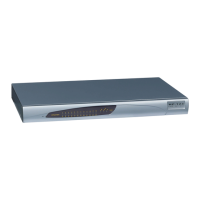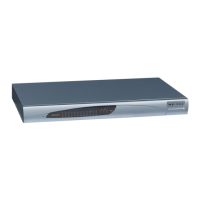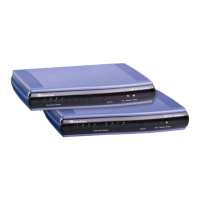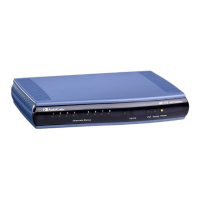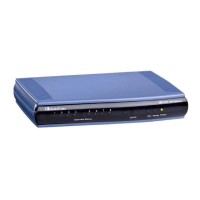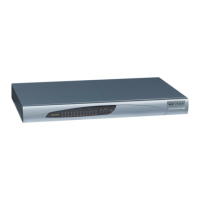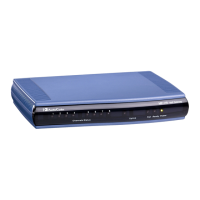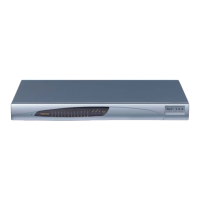SIP User's Manual 458 Document #: LTRT-12801
MP-500 MSBG
9.2.1.5 Survivability
The device's SBC application provides two survivability functionalities:
Routes calls to alternative routes such as PSTN
Routes calls between user agents in the local network, by using a dynamic database
(built according to registrations of SIP user agents)
For an example of configuring SBC survivability, refer to ''Survivability and Alternative
Routing'' on page 474.
9.2.2 SIP Network Definitions
The following SIP definitions are used for configuring the SBC application:
Signaling Routing Domain/SRD (refer to ''Signaling Routing Domain (SRD) Entities'' on
page 458)
SIP Interface
s (refer to ''SIP Interfaces'' on page 459)
Media Realm
s (refer to ''Media Realms'' on page 460)
9.2.2.1 Signaling Routing Domain (SRD) Entities
The device now supports the configuration of Signaling Routing Domain (SRD) entities,
using the SRD table. An SRD is a set of definitions of IP interfaces, device resources, SIP
behaviors and other definitions that together create (from the IP user's perspective) from
one physical device, multiple virtual multi service gateways.
SRD provides the following capabilities:
Multiple, different SIP signaling (SRD associated with a SIP Interface, described in
below) and RTP media (associated with a Media Realm) interfaces for multiple Layer-3
networks. Due to the B2BUA nature of the SBC application, different interfaces can be
assigned to each leg of the call, and between the LAN side and the WAN side.
Ability to operate with multiple gateway customers that may reside either in the same
or in different Layer-3 networks as the device. This allows separation of signaling
traffic between different customers. In such a scenario, the device is configured with
multiple SRD's.
Typically, one SRD is defined for each group of SIP User Agents/UA (e.g. proxies, IP
phones, application servers, gateways, softswitches) that communicate with each other.
This provides these entities with VoIP services that reside on the same Layer-3 network
(must be able to communicate without traversing NAT devices and must not have
overlapping IP addresses). An SRD is generally configured for the LAN and one for the
WAN.
Routing from one SRD to another is possible, whereby each routing destination (IP Group
or destination address) must indicate the SRD to which it belongs.
The configuration of an SRD includes assigning it a unique name and assigning it a Media
Realm (media port range associated with a Media IP interface, defined in the SIP Media
Realm table) as well as associating it with a SIP Signaling interface (described below).
Once configured, the SRD can then be assigned to an IP Group (in the IP Group table) and
to a Proxy Set (in the Proxy Set table).
Relevant parameter: SRD.
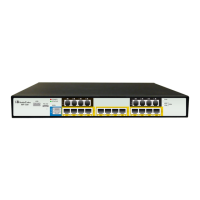
